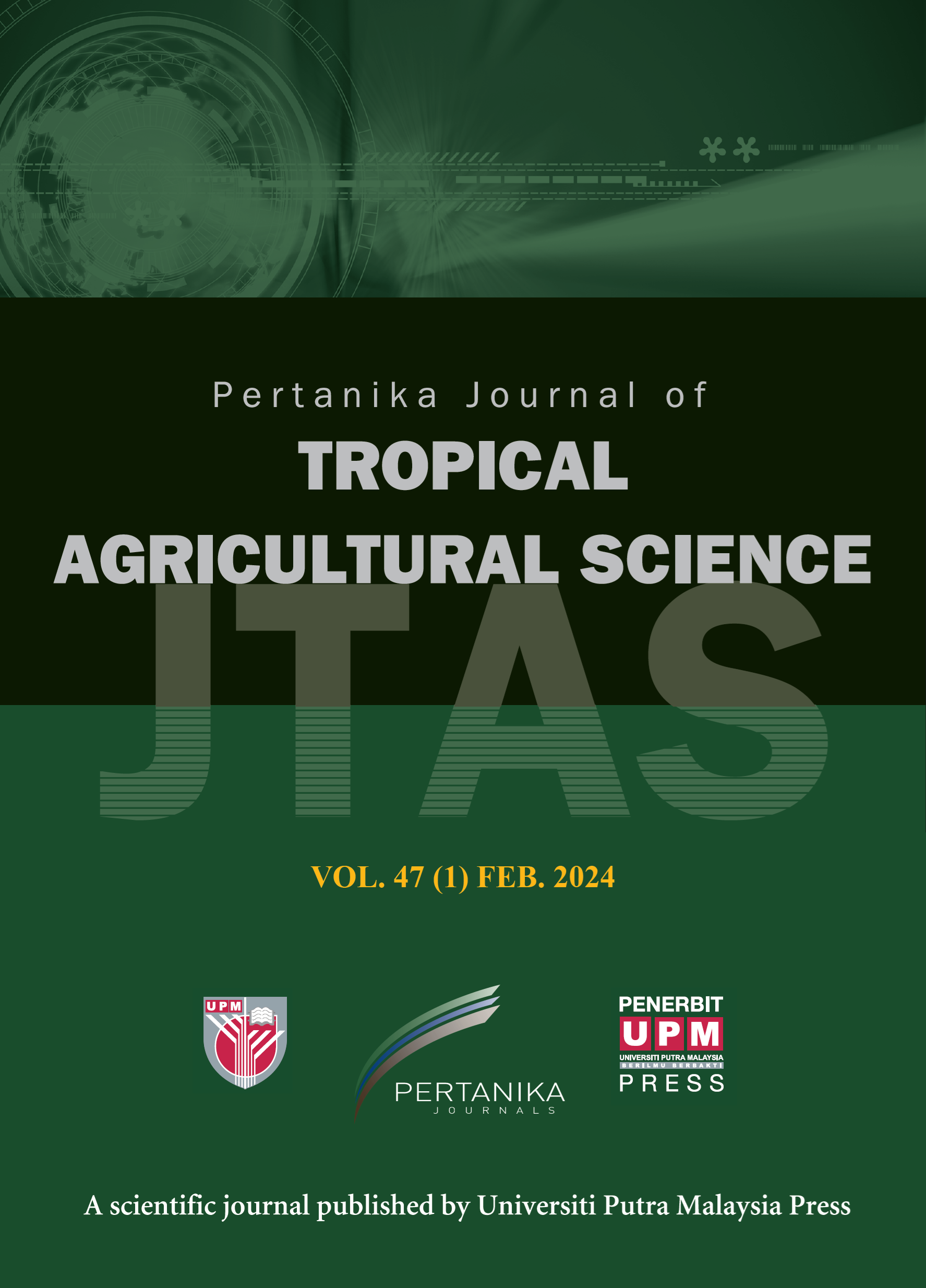PERTANIKA JOURNAL OF TROPICAL AGRICULTURAL SCIENCE
e-ISSN 2231-8542
ISSN 1511-3701
Impact of Silicon-enriched Fertilizer on Basal Stem Rot Disease in Palm Species Caused by Ganoderma boninense
Nurul Jamaludin Mayzaitul-Azwa, Nur Muhamad Tajudin Shuhada, Mohamed Musa Hanafi and Nurul Huda
Pertanika Journal of Tropical Agricultural Science, Volume 48, Issue 3, May 2025
DOI: https://doi.org/10.47836/pjtas.48.3.18
Keywords: Basal stem rot, betel nut palm, Ganoderma boninense, oil palm, silicon
Published on: 2025-05-16
Silicon (Si) is the second most abundant element that encourages plant growth, particularly in higher plants. This research maximizes Si’s stress-tolerance benefits for plants. Therefore, this study aimed to evaluate the impact of silicon-enriched fertilizer in reducing the impact of Basal Stem Rot (BSR) disease in palm species, suggesting a potential sustainable solution to this critical agricultural challenge. The study utilized the root-sitting technique on three-month-old palm seedlings grown under controlled nursery conditions. The T1 and T2 seedlings were untreated with silicon-enriched fertilizer. In contrast, the T3 seedlings were treated with 500g of silicon-enriched fertilizer. The T2 and T3 seedlings were further challenged with G. boninense PER 17 using the rubber woodblocks (RWBs) sitting technique during the nursery trial (10 months). Results revealed that disease incidence (DI) in oil palm (50.0%) and betel nut palm (44.4%) for T3 seedlings was significantly lower (p ≤ 0.05) compared to T2 seedlings, both of which had a DI of 94.4%. The BSR DI in T3 seedlings was reduced by 52.63% in oil palm and 67.35% in betel nut palm. These findings suggest that treatment T3 offers protection against G. boninense infection in both palm species. The results demonstrated that treatment T3, involving silicon-enriched fertilizer, significantly reduced the progression of BSR disease in palm seedlings, highlighting its effectiveness as a disease management strategy.
ISSN 1511-3701
e-ISSN 2231-8542




